Some people are searching for God. But my wife and I – we’re searching for mushrooms. It comes down to the same thing – God, and the mushrooms, aren’t always where you’re expecting to find them, and many who are looking for God find the Devil instead. He’s always somewhere nearby, like how the Fly Amanita is always somewhere near the Porcini. Or maybe it’s the other way around? Maybe God is following the Devil, to make sure he doesn’t cause trouble.
– from flüchtig, by Hubert Achleitner
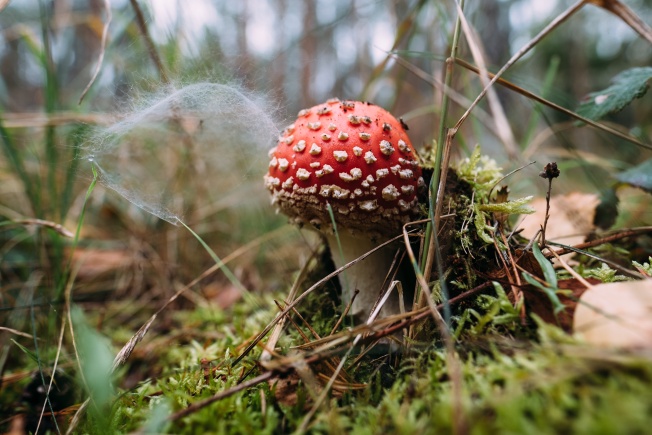
If we’re honest, it’s not entirely the same thing – the gratification is very delayed when you’re looking for God, but after finding nothing edible over three hours in the woods last week, I did walk by a 70-something year old woman, who was sneaking out of the forest with a literal basketful of Röhrenpilze. She noticed me ogling the basket, and I saw a furtive twinkle in her eye, as if she’d discovered a fundamental truth of the universe and was attempting to keep it a secret for herself.
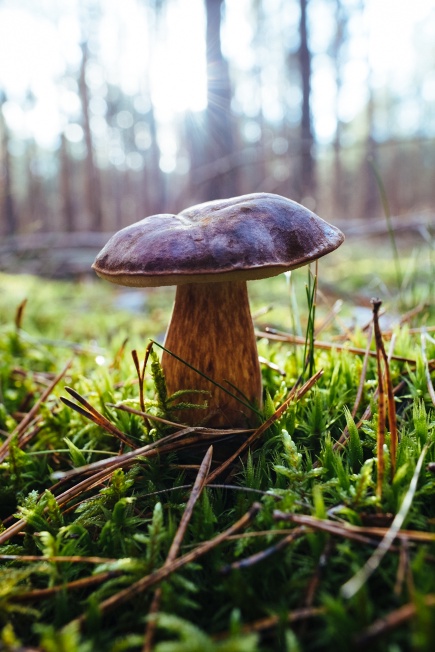
Maronen-Röhrling / Bay Bolete, found after intensive ground-study, and named after the horse-fur-colour, not the location.
Röhrenpilze are popular forageables because there aren’t many poisonous mushrooms in the category, and even the poisonous ones aren’t deadly. But I barely know how to identify them, and they aren’t mushrooms for the walker. You really need to look for them; they don’t lend themselves to being spotted casually on the edge of a trail.
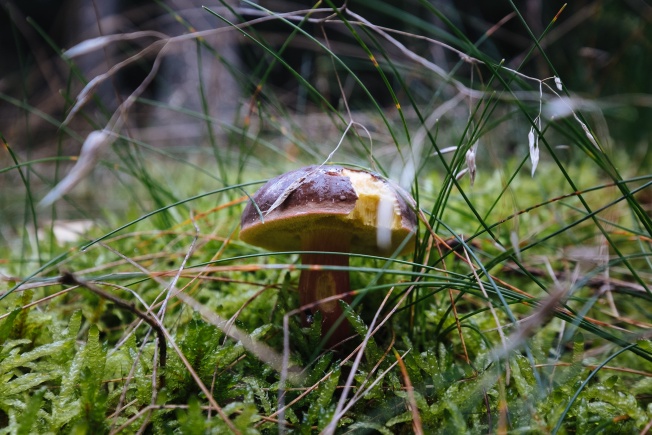
Small and low and pretty good at hiding, honestly.
In early Autumn, Todd and I walked from Strausberg to Rüdersdorf and met a couple of women on the way who were doing just this – really looking for Röhrlinge. We said hello, swapped notes and finds, and ran into them once more later in the day – I was contemplating what I was sure was a Safranschirmling, and upon noticing, they stated their aversion to gilled mushrooms because “there’s lots of super deadly ones”1. The Safranschirmling is a type of “giant mushroom”, where you can easily slide the ring up and down the stem, and where the flesh ‘bleeds’ red when you injure it. They’re easy to identify, but I was doing my due diligence regardless, because there’s a couple mushrooms in the category that will give you explosive diarrhoea. The other foragers, and Todd, told me to leave it; and in the end I did – but to this day I still wonder how it would have tasted.
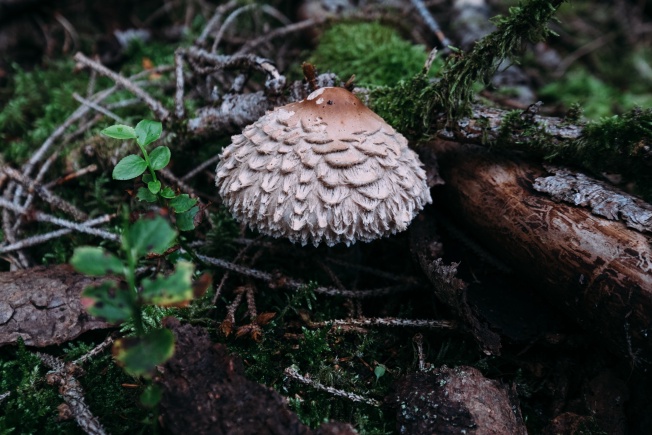
Probably a Safranschirmling, but I guess I’ll never know.
What convinced me, I think, was that one of them had said something along the lines of
Jeden Pilzart ist einmal essbar
that is,
Every type of mushroom is edible once
which is a joke I’ve made before, and one which everyone somehow invents independently, and seems to function as some kind of wry folk totem – a counterspell; a reminder that pride comes before the fall; something to wake the naïve forager from their glutton and negligence. Much in the same way that the Lord’s Prayer contains the phrase “lead us not into temptation, but deliver us from evil”, and it’s as much for the asker as for the answerer.
The weirder the mushrooms you choose, the greater the chance that there’s still some around. Or maybe it’s that the more exotic ones grow the quickest? One time in September, the woods were full of Flaschenstäublinge – just cut them open and make sure they’re pure white on the inside, still firm, and definitely aren’t just young gilled mushrooms in disguise2 –
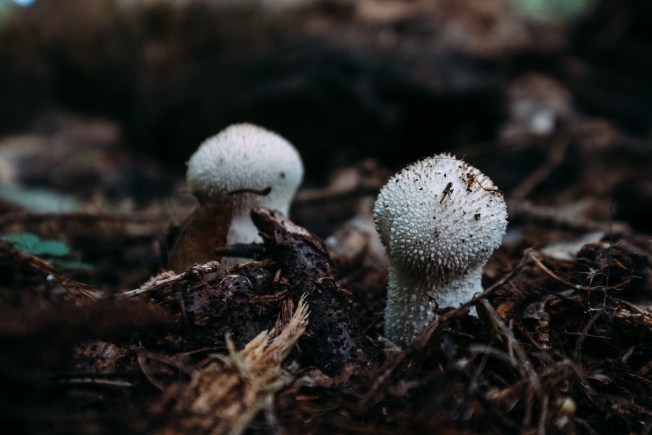
Spiky and delicious
… and Jackie and I found a number of Schwefelporling on a dead tree in August. They are categorically strange, with a spongy texture, but edible when they’re young. Apparently they’re good if you bread and fry them like a schnitzel, though honestly, I feel like the german-language mushroom classification guides slap this recommendation on a little too recklessly.
Schwefelporlinge taste wildly different depending on the tree they grow on; inseparable from the conditions which begat them.
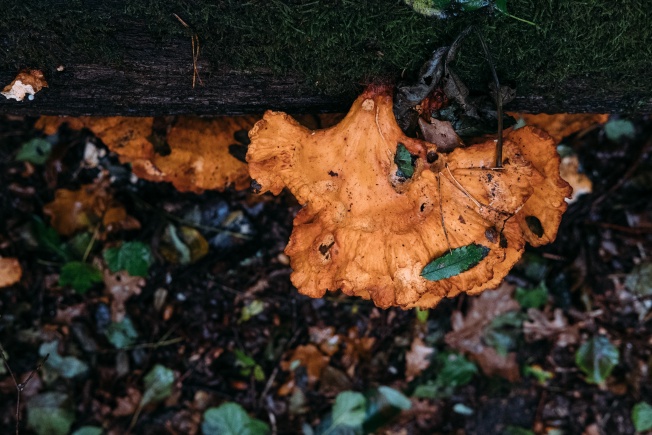
Of all the mushrooms I’ve found and eaten, though, there are two which, in my mind, are the height of both deliciousness, and the good sort of experiential strangeness: the Krause Glucke, and the Schopftintling.
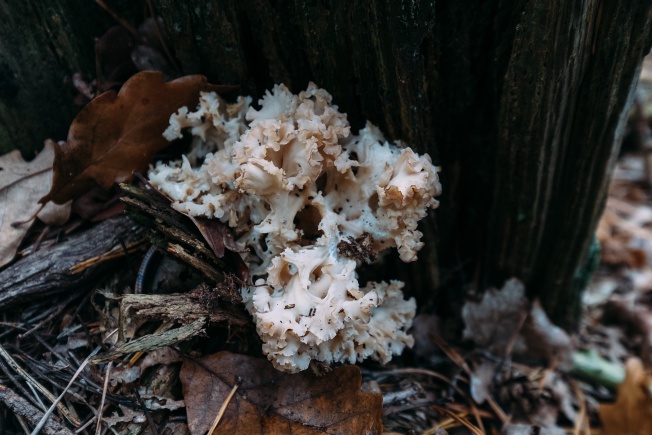
The Magnificent Krause Glucke. This is a small one.
Krause Glucken are veritable insect hotels; they’re ruffles upon ruffles and grow to be enormous. Proper treatment demands a thorough cleaning, and when you cook them, they have a texture kinda like al dente pasta and a slightly nutty flavour. The amazing thing about Krause Glucken is the nature of the find – they are rare, and grow, somewhat hidden, at the base of certain trees. But they can grow to forty centimeters wide. My second-greatest mushroom-related regret is the time that Jackie and I found one in the woods, and only took a third of it, because it seemed crazy to take a solid kilo of strange fungus home with us.
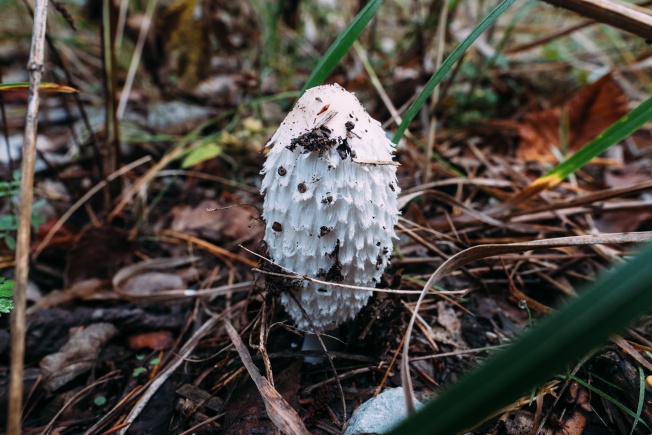
A brand new Schopftintling
Schopftintlinge look, in their youth, as if they’re something you probably wouldn’t want to put in your mouth – they’re furry. The German name translates literally to something like “hairdo ink-ling”. In English, they’re known as the Shaggy Ink-Cap. Similar vibe.
The “ink” part of their name comes from what happens as they age – the entire cap, from the edge inwards, slowly turns to black, sticky goop3.
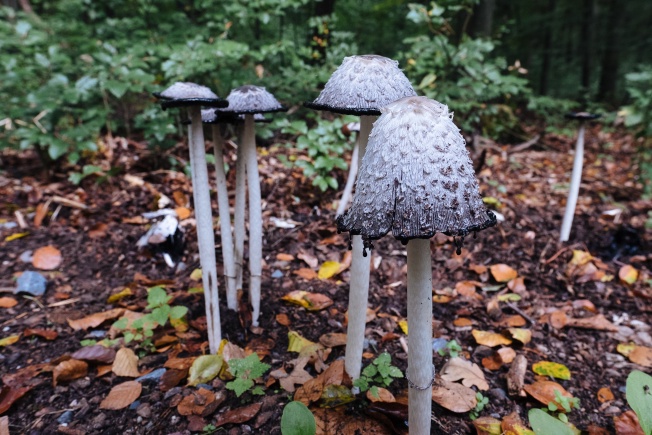
They’re barely recognisable as the same mushroom.
They’re super delicious, and they grow quickly and in large groups, which sounds as if it would make them perfect for foraging. But there’s a catch (there’s always a catch) – they start liquifying within two hours of picking, and, aside from freezing them, there’s no way to stop it.
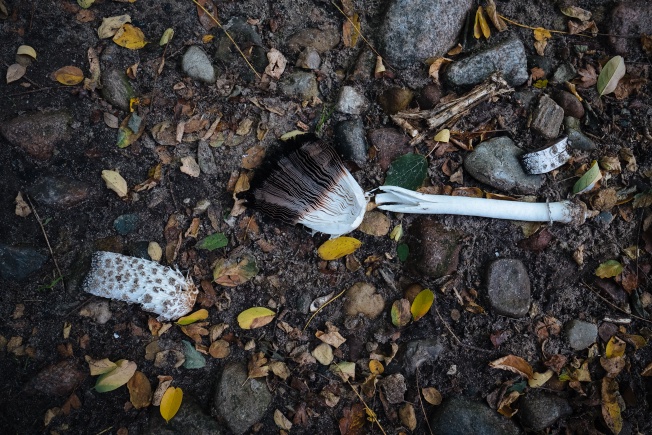
Crime Scene. Probably four hours after picking; judging from the distance the black ink has travelled up the cap.
This is slightly problematic if you’re an hour out of the city in the forest somewhere. Your best option is probably to bring a portable stove with you and cook them there on the spot, especially because the classic way to cook them is to just fry them in butter and salt anyway.
It’s hard to say exactly what the joy in foraging is. For some, it’s a treasure hunt, a Schatzsuche; for Edi and Pavel, it’s a connection with childhood, with family; for others, it’s simply about free, delicious food. For some, it’s a fascination with every tiny, intricate detail of the world.
For me, it’s a little of all of those things. But it’s probably also that, my entire childhood, I was told not to pick things up off the ground and stick them in my mouth indiscriminately, and there’s pleasure in having learned to discriminate.
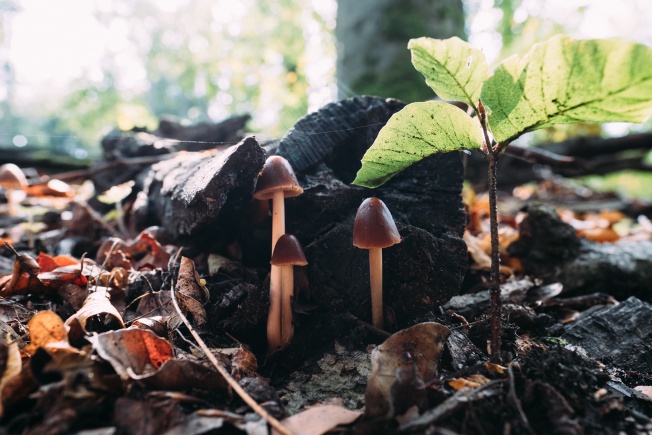
This is partially true – according to my favourite online mushroom guide, “Don’t touch small umbrella-shaped mushrooms! Lots of deadly species are in this category … [and] are often only able to be identified properly with a microscope!” ↩︎
Just half of a Grüner Knollenblätterpilz is enough to kill you. ↩︎
Yes, you can actually draw and paint with this. ↩︎